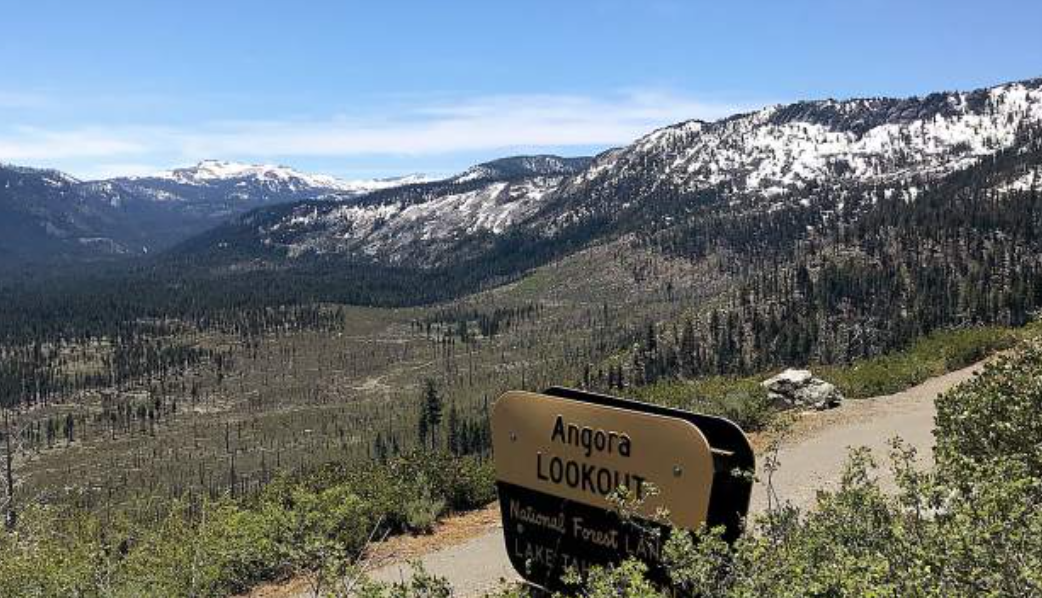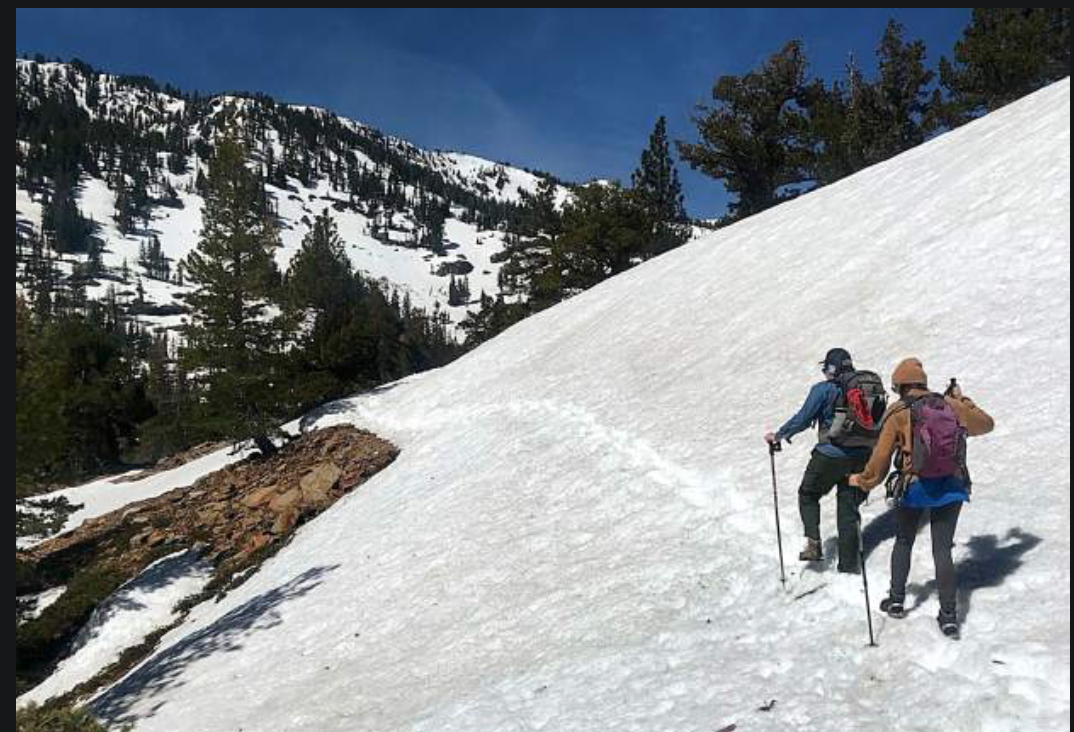Most hiking trails around the lake that aren’t covered by an historic snowpack, are muddy and wet and resemble streams more than paths.
“It is really snowy and wet up high,” said Morgan Steel, executive director for the Tahoe Rim Trail Association. “There are places where the trails are just submerged. We expect it to be like 2017 when the trails didn’t clear out until August. Peak bagging in the Desolation Wilderness is going to be tough, they’re going to be socked in for awhile. But the trails that are open are in great shape.”
Steel said the TRTA has had to push back some projects, cancel a youth camp last week and are trying to find ways to work around the snow for future events.
Some of the trails Steel said are ready for action include Van Sickle Bi-State Park, the Daggett Loop and Kingsbury North to Kingsbury South, all on Lake Tahoe’s South Shore.
She said the east and southern aspects are melting out quicker and Tahoe City to Brockway will likely be the next segment of trail to open.
The Angora Ridge Trail with great views of Fallen Leaf Lake and Lake Tahoe is also a good option, especially for mountain biking.
Mountain bikers, hikers and horseback riders are all sharing trails not buried.
Lisa Herron with the Lake Tahoe Basin Management Unit of the U.S. Forest Service said the snow level is hovering around 7,000 feet, but is rising quickly with the warming temperatures.
“The northern facing slopes are still holding quite a bit of snow,” Herron said.
LTBMU Wilderness Ranger Shannon Maguire has been patrolling area trails and the common thread in all her trail descriptions is snow and water.
The popular Glen Alpine Trail has “boot-top” deep water is some points on much of the trail, the crossing to Grass Lake is raging and the trail is buried in snow well before Susie and Gilmore lakes.
At Echo Lakes, patchy snow begins around the end of lower lake and all lakes above Upper Echo are nearly 100% frozen.
The Eldorado National Forest also has rangers gathering information in the Desolation Wilderness and added that the trail around Lower and Upper Lake is mostly clear but toward the end of Upper there are “steep, deep fields of snow.”
Consistent snow begins between Floating Island and Cathedral lakes on the Mount Tallac Trail; The Bayview Trail is mostly free of snow to Granite Lake, patchy above with solid snow beginning below Maggie’s saddle; Meeks Bay Trail has consistent snow between Genevieve and Crag lakes and the Big Meadow Trail water is high in the meadow and surrounding the bridge.
Eldorado National Forest also provided updates for several trailheads.
At Loon Lake, the gate is locked to drive to the trailhead, but the trail is in “decent” condition with roughly 20% snow coverage to Spider Lake.
Van Vleck/Tells Creek, the road is clear about 4 miles in but has significant snow drifts on the way to the trail.
Lyons Creek and Twin Lakes is packed in with snow. Wrights Lake Road is still closed as is the Wrights Lake Recreation Area.
At Pyramid Creek, the trail to the base of the falls is free of snow, but in many places the trail is a stream with multiple high-water crossings. Above Horsetail Falls, lakes such as Avalanche and Ropi are still covered in snow and at Ralston, about 2 miles from the trailhead there is snow on the trail.
“The temperatures are really warm in the valley and it could be misleading to people coming here to visit,” Herron said. “We just want people to know there is a ton of snow up here and that the water is cold and moving fast.”
Mountain bikers have been enjoying good conditions and the Tahoe Area Mountain Biking Association has already had a few trail days where volunteers have helped trail maintenance, including the removal of about 50 downed trees, said club president Ben Fish.
“Most of the trails on the East and South shores have melted off to about 8,000 feet and it’s been riding really well,” Fish said. “The volunteers have really helped get us off to a good start this year.”
Fish said he rides mostly in the evenings and the crowds sharing trails are scarce.
GO EXPLORE, JUST BE SMART AND STAY SAFE
If your inner John Muir is screaming at you that the mountains are calling and the need to vanquish summits from your checklist is too strong, then by all means go, just be prepared for the conditions.
That means wearing the proper clothing and footwear, food, water and/or filter, compass and map and cell phone or mobile device.
Even a small compact stove would come in handy in emergencies for warmth, and food, since fires are not allowed year round anywhere in the Tahoe Basin except for developed campgrounds with fire rings. But a permit is required to operate the stove.
Herron said a paper map and compass are ideal because cell service is severely limited in the high country and relying on electronic navigation is unreliable.
“Right now a lot of trails aren’t visible,” Herron said. “Proper footwear is also a must, no tennis shoes or flip flops. Ideally, they would be waterproof boots.”
Staying on the trail as much as possible is also recommended. Tromping through a foot of mud off the side of the trail to avoid hiking through water creates more work for the people who maintain them.
“Have fun with it, go right through the water and get muddy and go right through those snow banks, but be careful,” Steel said. “The stream crossings are raging, there are a lot of slick rocks. You may have done the same crossing in August or whatever, but this year they are very different, so people need to be careful.”
The Forest Service has a website “Know Before You Go” (https://www.fs.fed.us/visit/know-before-you-go) that tries to answer all questions about what people can expect when traveling into forests, from what outdoor opportunities there are, to staying safe and avoiding dangers to knowing the weather and respecting wildlife.
“We want people to come to Lake Tahoe prepared, have fun and be safe,” Herron said. “When vacation accidents happen, for me, it’s just heartbreaking.”
CLICK HERE to see the original article in the Nevada Appeal newspaper.


 RSS Feed
RSS Feed